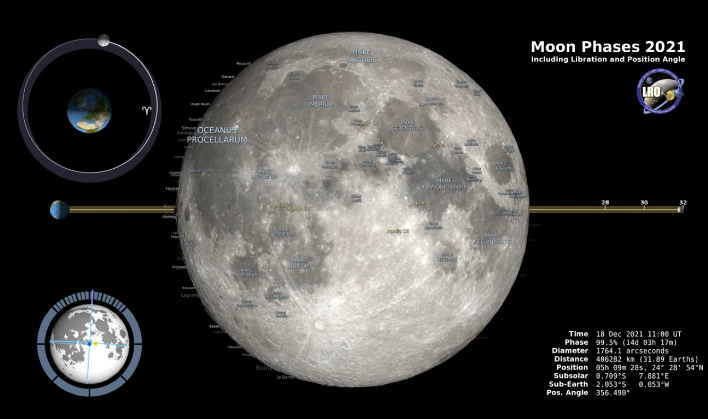Cold Moon 2021: How To See The Longest Full Moon Of The Year
The Moon has been in the headlines recently for a few reasons. NASA is set to launch its first Artemis mission soon that will include sending humankind back to the surface of the Moon. NASA also plans on eventually setting up a lunar base that will serve as a go-between for missions to Mars and beyond, and recently said it is looking at possibly using nuclear fission to power it. But it is all about the Moon tomorrow night as it will be in full view and shining at its brightest.
While the Moon will be at its fullest tomorrow night around 11:36 p.m. EST, it will be appear full beginning tonight through Sunday, making it a full Moon weekend. Due to the late hour, some calendars will show the full Moon taking place on Sunday as they adhere to Coordinated Universal Time (UTC). So, if you are an avid fan of our lunar friend in space and want to see it at its fullest, be sure to make the necessary time zone adjustments.

Hindus have another name for the upcoming full Moon, the Datta Jayanti, as it corresponds with the Datta Jayanti festival. This is a festival that celebrates the birthday of the Hindu god Dattatreya (Datta). It also corresponds with the Thriruvathira festival that is celebrated by Hindus in the Indian states of Kerala and Tamil Nadu.
Yet another name for this full Moon is derived from Buddhists of Sri Lanka, the Unduvap Poya. It is believed that the Buddha attained enlightenment by meditating beneath a Bodhi Tree in India. The daughter of Emperor Asoka in 3rd century BCE, who was also the founder of an order of Buddhist nuns, brought a branch of this tree to Sri Lanka. That branch was planted in 288 BCE by King Devanampiya Tissa in the Mahamevnawa Park in Anuradhapura, Sri Lanka and is said to be the oldest living human-planted tree known with an actual date it was planted.
Some also refer to this moon as the Chang'e Moon, after the three Chinese lunar landers that touched down on the Moon during this time of the year. The missions derived their name from the Chinese goddess of the Moon, Chang'e, who was thought to live on the Moon with her pet rabbit, Yutu.
A few more names that have been attached to this full Moon are the Cold Moon, Frost Moon, or Winter Moon from the Maine Farmers' Almanac. These names were what the Native Americans referred to the full Moon when the almanac was being published in the 1930's. Over time the names have been widely adopted.
Regardless of what name you give the upcoming full Moon, it should be a beautiful spectacle to behold. Be sure to bundle up if you are planning to go outside and enjoy looking up at the big, bright full Moon this weekend.

